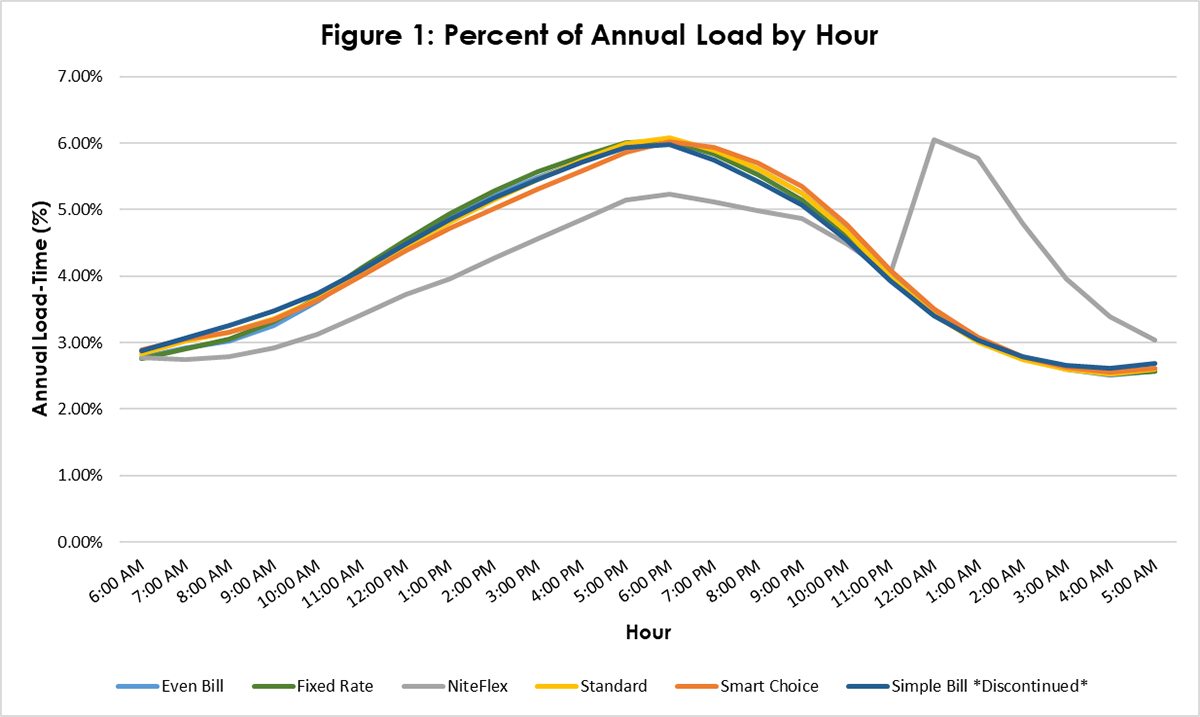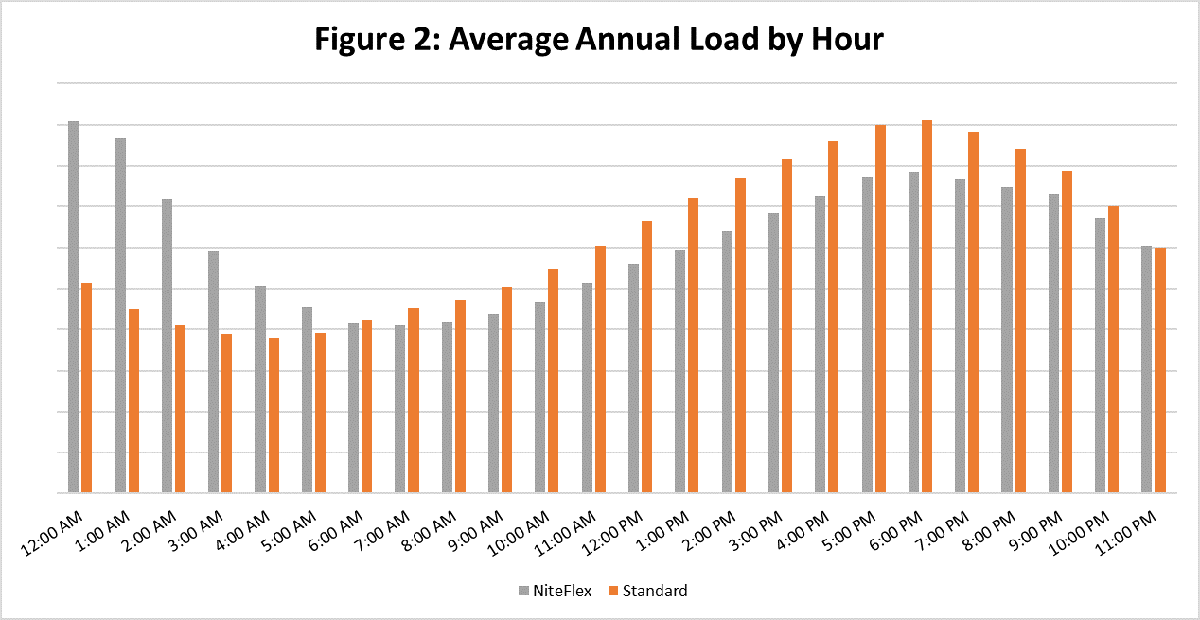
The concept of allowing residential members a choice of electric rates to better align with how they use power has become a growing area of interest in the world of rate design. Over the past several years, CFC worked with
Cobb Electric Membership Corporation to analyze the metro-Atlanta, Georgia-based distribution cooperative’s Lifestyle Rate program, made up of five different rate options, including its innovative
NiteFlex® option for electric vehicle (EV) owners, which CFC helped to design.
“The purpose of our Lifestyle Rate program is to offer members different rate options based on how they use electricity,” Cobb EMC Vice President of Power Supply and Planning Tim Jarrell said. “Most members like to have options when it comes to their rates. And by enabling members to choose the rate that’s right for them, they can save money based on their usage decisions.”
In 2018, Cobb asked
CFC’s Regulatory Affairs team to help it better manage peak demand and assist in an updated rate design process for the cooperative’s residential members.
“CFC worked with Cobb EMC to develop an overarching set of rate policy goals and establish a three-year rate strategy,” CFC Vice President of Regulatory Affairs Jason Strong said. “The policy goals included expanding residential consumer choice regarding rates, ensuring fixed-cost recovery for the cooperative and decreasing the magnitude of any rate-related cross-subsidies of customer classes. We then performed a cost-of-service study (COSS) to serve as a baseline of cost incurrence, and subsequently helped Cobb modify its rate design to better align rates with the identified policy goals.”
New TOU Rate Option Created to Encourage EV Charging Overnight
Cobb EMC also wanted to implement a new time-of-use (TOU) rate option for residential members, particularly EV owners. The cooperative anticipated more members would be purchasing EVs in the coming years and wanted to encourage EV adoption by offering a low charging rate. But it also wanted to incentivize members to switch their EV charging and any other large energy loads to the overnight period when the cooperative’s costs were lower. This became the NiteFlex rate.
“Based on the specifics of Cobb EMC’s system, CFC saw an opportunity to design NiteFlex as a three-period TOU rate—peak, off-peak and super off-peak,” Strong explained. “That’s different from most TOU structures, which are split into two time periods.”
Cobb was the First Co-op to Offer Free Overnight Home Charging for EVs
NiteFlex also featured a unique selling point: up to 400 kilowatt hours (kWh) of free electricity each month to charge EVs or run smart appliances during the super off-peak period (midnight to 6 a.m.); consumption over 400 kWh is billed at $.0450 per kWh. Upon launch of NiteFlex in 2019, Cobb EMC became the first cooperative in the nation to offer free overnight home charging for EVs.
“We currently have about 1,000 members on our NiteFlex rate with approximately 20 new members signing up for this rate each month,” Jarrell said. “We don’t anticipate all of our EV owners will choose the NiteFlex rate, but we do believe that the future growth of EVs in our territory will drastically increase in the coming years.”
Earlier last year, Cobb EMC asked CFC to conduct a follow-up analysis to evaluate the performance of the Lifestyle Rates—including NiteFlex; whether the designed rates have had the intended effect; and whether the cooperative’s cost to serve was aligned with revenue collection (see “CFC Helps Members Adjust to Changing Climate of Rate Design,” Solutions News Bulletin, October 5, 2020).
AMI Data was Key to Evaluate Rates
CFC’s analysis made use of Cobb EMC’s extensive advanced metering infrastructure (AMI) data.
“The 2018 analysis we performed included Cobb EMC’s first COSS with AMI data, and the 2020 study expanded on that baseline,” Strong said. “Hourly AMI data are critical to effectively evaluate usage characteristics and align them to higher-cost periods. Dynamic rates cannot be properly designed to achieve the intended outcome without conducting data analytics and predictive modeling. Hourly AMI data for an entire system for at least 12 calendar months are usually a minimum requirement; three to five years of AMI data to evaluate usage characteristics is best practice.”
CFC’s latest analysis indicated that Cobb EMC’s Lifestyle Rates have had the desired effect.
“CFC was able to confirm through the 2020 study that cost incurrence is aligned with cost recovery through Cobb EMC’s Lifestyle Rates; that the choices made by members aligned with the intended outcome of the program; and that subsidies between rate classes have decreased,” Strong said.
For example, with the NiteFlex rate, CFC’s analysis showed that during peak periods NiteFlex members’ electricity usage is lower than usage under other residential rate options, but usage spikes at midnight as EVs come online to charge during the super off-peak period. Moving into the higher-priced period at 6 a.m., NiteFlex members’ load then declines. (See Figures 1 & 2)

“Not all systems have underlying cost structures that would result in utility cost savings with a TOU rate—at least in the short run,” Strong said. “But for some systems, like Cobb EMC, and when properly designed, a TOU price signal for an EV program can have the intended effect.”

Cobb’s New LifeStyles Rates Worked as Intended
Jarrell confirmed that the Lifestyle Rates are working as intended. “One of our goals was to provide members with options based on how they use electricity, and the program does that. In fact, we have received good member response to the Lifestyle Rates,” Jarrell said.
“Another goal was to realize cost savings by switching more load to off-peak periods. This is happening not only with the NiteFlex rate, but also with our Smart Choice rate option.” This option allows members to save money and take advantage of a lower energy charge by reducing energy usage on the hottest days of the summer—Energy Saving Peak Days. Members are notified one day before an Energy Saving Peak Day is expected to occur.
“With this peak notification communication to our members, we are seeing a reduction in our peak load,” Jarrell said. “That can lead to a reduction in our short-term capacity needs to serve our members, along with minimizing the long-term need for additional generation in the future.”
“No one rate design will be the best fit for every cooperative,” Strong cautioned. “For example, smaller systems may find providing rate options is not feasible, either because there is not enough interest from members, load diversity does not support it or the costs of implementation, including marketing, billing and administration, can make it too expensive.” In the case of Cobb EMC, the large number of residential members served—approximately 200,000—made offering five residential rate options possible.
CFC Helped Cobb Make Informed Decisions to Support Its Goals
Cobb EMC was pleased with CFC’s collaborative approach to rate design and analysis and CFC’s effective communication.
“CFC had a streamlined approached that made the collaboration process work very well,” Jarrell said. “They were extremely knowledgeable and experienced in ratemaking, utility management and operations. The data-gathering process was seamless, and CFC staff provided reports and presentations that showed a clear and comprehensive picture of Cobb’s operations and financials.”
“CFC also enhanced their cost-of-service models to include more granularity, which helped us gain more insight into our cost structures by each rate class,” Jarrell added. “That helped us make informed decisions to support our goals and objectives.”
“Overall, CFC was attentive to our needs and consistently delivered quality service that we were more than pleased with,” Jarrell concluded.
Learn More About the CFC Regulatory Affairs Team and How They Can Support Your Co-op
CFC’s Regulatory Affairs team works with approximately 50 members annually—including both distribution and generation and transmission cooperatives. Work includes providing electric utility ratemaking, policy and advisory consulting services. The team also provides expert testimony in ratemaking proceedings, where necessary, before federal and state regulatory or legislative bodies. In addition, the team is working within the industry to address and affect pricing theory utilizing AMI metering data coupled with advanced data analytics capabilities.
The team brings decades of electric utility experience from federal and state regulatory commissions, investor-owned utilities, private consulting practices and from within the cooperative network with expertise in areas of regulatory accounting, economics, data analytics and engineering—specific to the electric utility industry and to the cooperative business model. The team also retains the services of several outside consultants and legal counsel.
